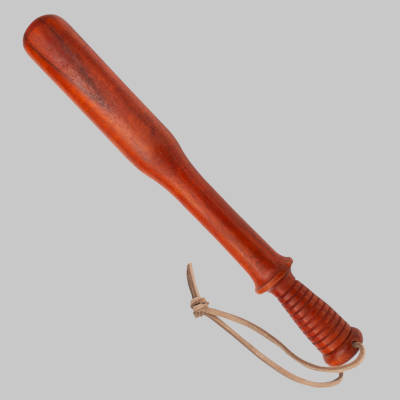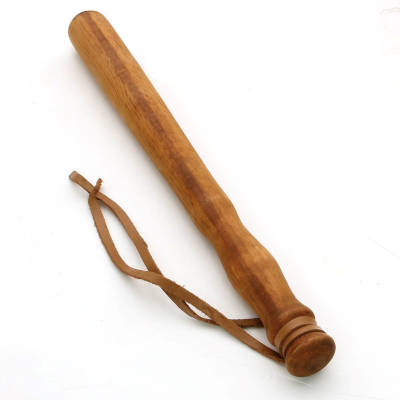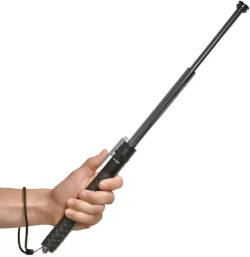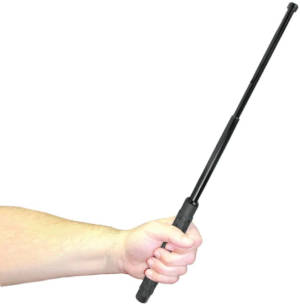Billy Club Weapon

A billy club, also known as a baton, nightstick, or truncheon, is a classic self-defense tool designed for personal protection, law enforcement, and security applications. With a simple but effective design, billy clubs have been used for centuries to deter threats and maintain control in high-risk situations.
Whether you’re considering a wooden billy club for home defense or a collapsible baton for discreet carry, understanding the features, benefits, and legal aspects of these tools will help you make the right choice.
What is a Billy Club?
A billy club is a short, solid impact weapon made from wood, metal, or polymer. Originally designed for law enforcement and security personnel, these clubs are now commonly used for self-defense, protection, and even personal security training.

Truncheon - Old Bobby Stick - image source
♦ Key Features of a Billy Club:
✔️ Durable Construction – Made from hickory, steel, or high-strength polymers.
✔️ Easy to Carry – Available in fixed and collapsible designs.
✔️ Highly Effective – Designed for striking and blocking attacks.
✦ Looking for a reliable self-defense club? Check out our expandable batons and nightsticks.
Billy Club vs. Baton – What’s the Difference?
One of the most common questions people ask is, "Is a billy club the same as a baton?" While the terms are sometimes used interchangeably, there are key differences:
| Feature | Billy Club (Nightstick) | Expandable Baton |
|---|---|---|
| Design | Solid, fixed-length stick | Telescopic, collapsible |
| Material | Wood, rubber, or metal | Steel, aluminum, polymer |
| Portability | Less compact | Easy to conceal |
| Use Case | Law enforcement, home defense | Everyday carry, tactical defense |
For those who need a portable and discreet option, an expandable baton might be the best choice. However, if you prefer a sturdy, full-length club for home defense, a traditional wooden billy club is an excellent option.
✦ Explore our top-rated self-defense auto-baton here.
Modern Billy Club - Automatic Extension Baton
How to Use a Billy Club for Self-Defense
Billy clubs are effective non-lethal self-defense weapons when used correctly. Here are some tips:
✅ Proper Grip – Hold the handle firmly with your dominant hand, ensuring a secure grip.
✅ Defensive Stance – Keep your knees slightly bent, and position the club between you and a potential threat.
✅ Effective Strikes – Target arms, legs, or non-lethal areas to disable an attacker without excessive force.
✅ Blocking Attacks – Use the club to deflect strikes and protect yourself from harm.
✦ Want a compact self-defense tool? Our retractable steel batons offer high portability and impact force.
Billy Club Laws – Are They Legal?
Before purchasing a billy club or baton, it’s important to check local laws and regulations. In the United States, laws vary by state:
- ✅ Legal to Carry (with restrictions) – Some states allow billy clubs for self-defense but may have regulations on length and concealed carry.
- ⚠️ Restricted Use – In states like California and New York, carrying a billy club in public may require a permit.
- ❌ Prohibited – Some areas have strict laws banning impact weapons entirely.
♦ Before purchasing, always check your state’s self-defense laws to ensure compliance.
Billy Club Materials – Which One is Right for You?
Billy clubs come in different materials, each with its own advantages:
Hardwood (Hickory, Oak, Maple) – Traditional, strong impact force, classic look.
Steel (Expandable Batons) – Compact, durable, best for portability.
Polymer (High-Strength Plastic) – Lightweight, weather-resistant, ergonomic grip.
✦ Looking for a high-quality self-defense club? Browse our tire thumper baton.
Best Billy Clubs & Expandable Batons for Sale
If you’re in the market for a billy club or baton for self-defense, here are some top-rated options:
1️⃣ Classic Wooden Billy Club
- Material: Solid hickory wood
- Length: 18-24 inches
- Ideal for: Home defense, security personnel
2️⃣ Telescopic Steel Baton
- Material: High-strength steel
- Collapsible design for easy carry
- Ideal for: Everyday carry, tactical use
3️⃣ Rubber-Handled Nightstick
- Material: Polymer with rubber grip
- Lightweight but effective for personal security
- Ideal for: Security guards, personal protection
✦ Find the perfect self-defense club for your needs – Shop Batons Now.
Conclusion – Choosing the Right Self-Defense Club
Billy clubs are a reliable, non-lethal self-defense tool that can provide added security at home or on the go. Whether you choose a solid wooden nightstick, an expandable baton, or a lightweight polymer club, selecting the right tool depends on your needs, preferences, and legal restrictions.
The Telescopic Steel Baton
♦ Ready to enhance your personal security?
Browse our full selection of self-defense batons and billy clubs today!
Add your comment now!
Post CommentRecent posts
-
03/12/2025Best Stun Guns for Self-Defense in 2025
-
03/11/2025How to Prevent Kidnapping – Top Safety Tips
-
03/11/2025What Do Rapists Look For? 10 Red Flags to Avoid



